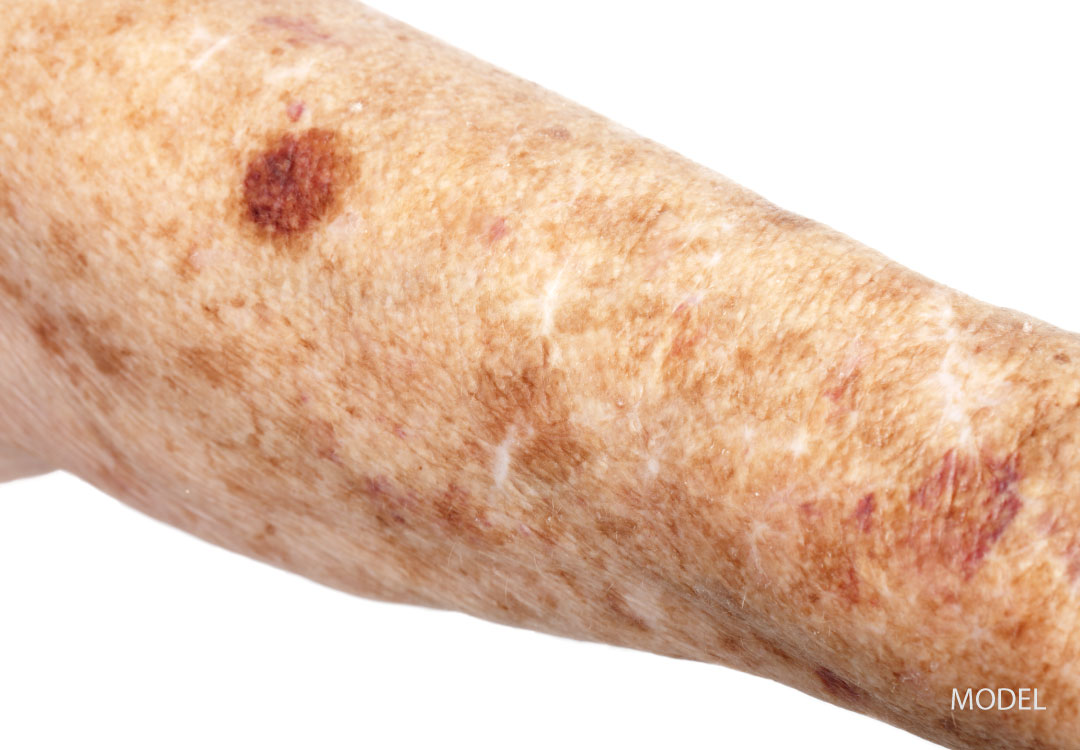The FDA granted initial approval in 2017 for doctors to use Eskata for the topical treatment of seborrheic keratoses. These skin lesions are more commonly known as raised age spots, liver spots or simply SKs. Eskata is the first and only topical hydrogen peroxide treatment available for these types of age spots. All other treatment methods for SKs involve minor surgeries, so Eskata is a popular alternative treatment that we offer as part of our aesthetic services.
Eskata Treatment
Eskata is made from a 40 percent solution of hydrogen peroxide. Because of its powerful concentration and the associated risks, Eskata can only be prescribed and applied to patients by a licensed health care provider. A treatment session only takes about five minutes per lesion.
The Eskata solution comes in a sealed vial, which the doctor opens for the procedure. Using the Eskata applicator, the doctor applies the solution to each raised age spot. This is done a total of four times, with a one-minute lapse between each application. The topical solution is only applied to the skin in the location of the age spots. Any excess solution that makes contact with skin is quickly wiped away with a clean absorbent wipe.
The raised age spots that are treated with Eskata are covered with a white crust initially, which will fall off in a day or two. The age spots should disappear completely after about three weeks. However, in some cases it may require a followup treatment with Eskata to completely remove the age spots.
Eskata Reviews
Many patients report that Eskata is highly effective in completely removing their seborrheic keratoses. Others report that when they tried it once, it did not effectively work for them. This is why a second followup treatment with Eskata is recommended for certain patients.
One thing that many people agree on is that an Eskata treatment is slightly painful. The 40 percent hydrogen peroxide solution burns the SKs, so it stings for a few minutes after application. In a small number of patients, the Eskata solution can cause extreme allergic reactions to the skin. If you are receiving an Eskata treatment and experience extreme pain, let your doctor know immediately.
Eskata Before and After
As you can see from Eskata before and after pictures, the treatment is highly effective at reducing the appearance of raised age spots in the short term — and completely eliminating them without scarring in the long term. Some patients choose to discontinue the treatment because of the painful stinging, but as you can see, the long-term benefit is the total removal of the raised age spots, resulting in younger-looking skin.
If you have raised age spots and are curious about a non-surgical removal method, contact our office to learn more about Eskata treatments.



Share